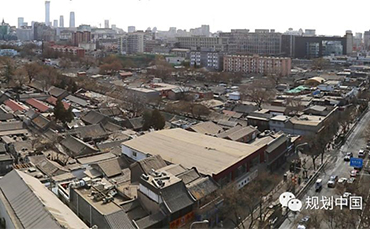


01 Background
"History and culture are the soul of a city and people should cherish the city's historical and cultural heritage as their own lives.", proposed by Xi Jinping when he visited Beijing in early 2014. The Beijing Urban Master Plan, published in 2016, focuses on the overall protection of old city of Beijing. Many policies have been introduced to control urban development in the old city. According to these policies, old urban areas will no longer be demolished, and the lives of residents in old hutong (alleyways) will be improved. With a goal of "protecting Beijing's old city to the greatest extent possible" and adopting stricter measures, the city has strengthened urban renewal in its historical and cultural areas, especially neighborhoods in and around hutong. Chongyong Street is one of the pilot urban renewal areas in Beijing's old city.
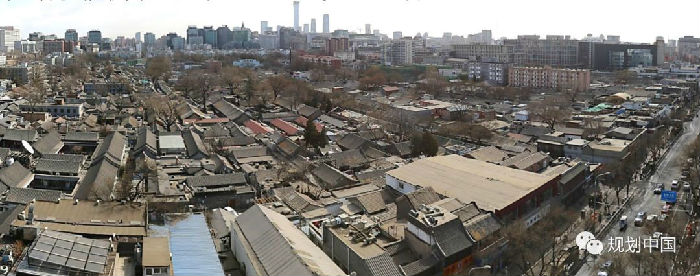
The old urban areas in Beijing (the street on right is Chongyong Street)
02 The urban renewal practices
The history of Chongyong Street
Chongyong Street in the Dongcheng District of Beijing, is one of the main streets in the old city, connecting the Temple of Heaven and the Temple of Earth. As an important axis of the city, many important functions are located along the street, including administration, culture, tourism, transportation, and public services. There are also many cultural relics and historical sites along Chongyong Street, including 7 historical and cultural blocks, 24 national key cultural relics protection units. It is a main cultural landscape line displaying both the history and modern life of Beijing.
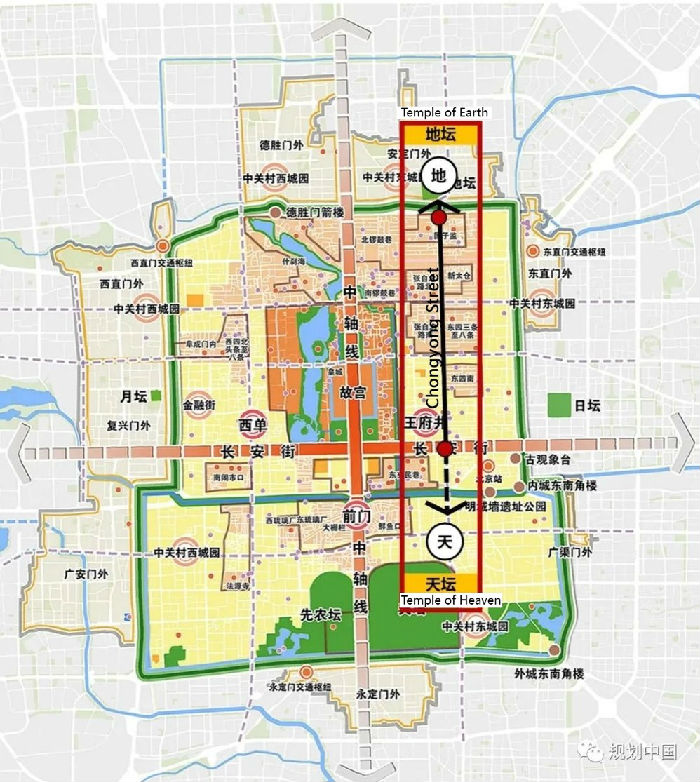
Chongyong Street in the overall spatial structure of old city in Beijing Urban Master Plan
As the first job of urban renewal design, urban planners studied the history of this street and summarized its historical and cultural values into four points: it is one of the two streets running through the Beijing old city from the north to south; it used to be a commercial center of the city; many important temples and the Imperial College locates along the street; many important historical events in modern history happened on the street. Focusing on these historical and cultural values, the renewal design first found out the related urban space and then proposed a spatial structure for history and culture protection. The hutongs connected to Chongyong Street are designed with different themes, such as the Guozijian hutong with Confucianism theme and the Beixinqiao hutong with traditional folk culture. By the thematic design, the history and culture of Chongyong Street can be better protected and displayed.

People-centric urban renewal design
An urban renewal project is closely related to the residents, merchants, visitors and different property rights units. Public participation thus is a core process during the renewal design and construction process. At Chongyong Street, there are five methods applied to engage the public in the project, including establishing a chamber, building a showroom, making workshops, building a WeChat public account and making a WeChat mini program. By this method, the planners and local government collected people's opinions and introduced the project to the public.
During the design and construction process, residents are invited to attend and make their unique memories stay in the city. For example, the designers made 48 different designs of the window and door, 12 designs of plaque for residents to choose from. So after the renewal, the street landscape not only is improved but also engaged residents' memory.

The design menu of window, door and plaque
Multi-professional collaboration in urban renewal
Chongyong Street is facing many problems in aspects of street landscape, functional layout, historic protection, transportation and public space. Even though this street has experienced eight times of renewal construction, these problems still exist. The former projects only focused on one problem or a kind of facility but failed in comprehensively proposing the renewal of this urban area. Therefore, in this project, the design-making team consists of several different professional institutions including architecture design, urban planning, transportation planning and urban infrastructure management, to solve the problems and promote urban renewal collaboratively. Also, this project involves four neighborhoods and more than ten government departments. For example, the building construction involves planning departments and municipal departments; the landscape construction involves the subway company, the garden bureau, the pipe network company, the electric power company, the telecommunications company and other departments. Therefore, the Dongcheng District Government established the Chongyong Street Project Office to cooperate with the related departments and companies.
The local planner is another important role in promoting the renewal project. With professional knowledge, they became the bridge between government and citizens, which is helpful to make the renewal design be implemented.
A comprehensive renewal design of the street facade and its surrounding areas
The renewal design not only focused on the street fa?ade but also proposed strategies to improve the space adjacent to the street. For the street fa?ade, the renewal design aims to recover the materials and features of historic buildings and remove the decorative components that do not fit the historical landscape. For the building along the street, those with historical value are protected and repaired first and then the buildings with structural risks are repaired and the illegal constructions are demolished. For the buildings and yards within 50-80 meters of the street, the design team proposed night different strategies, based on the landscape feature, property type, function and the situation of illegal constructions of each building, to improve their inner and outer space.
The Chongyong Street area is very compact, lack public space and some area is even difficult to access by vehicles. However, there are also some inefficiently used gray spaces in this area. By this renewal design, a number of gray spaces were identified and converted into public spaces. These public space improves the environmental quality of this area and also improve the property values, achieving a win-win situation.
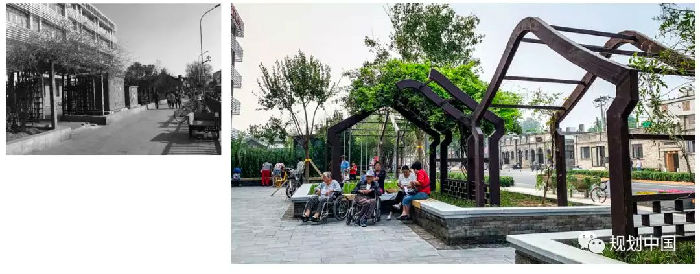
A gray space changed into a popular public space in the Chongyong Street area.
03 Implementation of the urban renewal design
After more than 500 days, the first phase project is finished and open to the public, by the end of 2019. All the residents and visitors feel satisfied with the change and this project also provides a good example of urban renewal in the old city of Beijing. The street renewal design not only beautified the street fa?ade but also promoted a comprehensive improvement of its surrounding areas. Efforts, including renovating courtyards, repairing dilapidated houses, demolishing illegal construction, repairing ground paving and improving water supply system, have significantly improved the living environment of the old city.
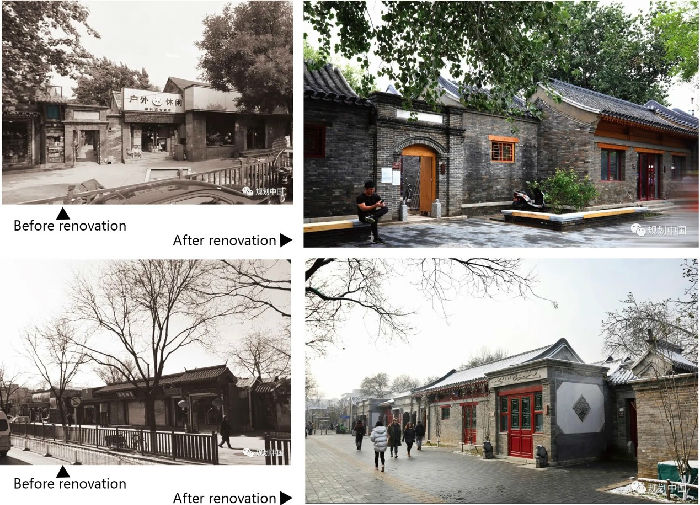
Photos before and after the urban renewal project on Chongyong Street.
Source: <https://mp.weixin.qq.com/s/PlNJABTzII6seT6-kJilHw>
Edited and translated by Jia Mengyuan